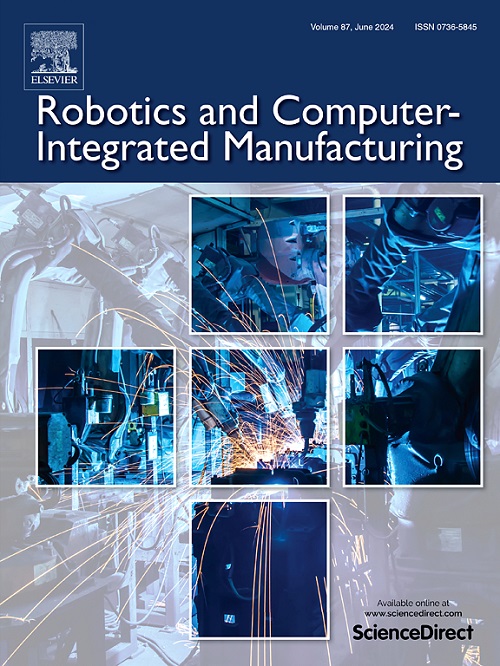Increasing dynamic accuracy of machine tools using predictive feedforward optimization with hybrid modeling
IF 11.4
1区 计算机科学
Q1 COMPUTER SCIENCE, INTERDISCIPLINARY APPLICATIONS
引用次数: 0
Abstract
The paper presents an online optimization-based feedforward design framework using hybrid modeling to increase the dynamic accuracy of machine tools. Designed for use in dynamics simulation and feedforward compensation, the hybrid model combines a physics-based model of the multibody dynamics and a data-driven Gaussian process regressor of the output discrepancy. The feedforward control is based on the predictor–simulator separation, where the accurate but tractable nonlinear hybrid model is used for dynamics simulation, and the linearized predictor is adopted for optimal feedforward design with a receding horizon approach based on convex programming. This strategy allows the advanced modeling techniques to be used for real-time dynamics compensation in an open-loop fashion, where the associated convex optimization problem can be solved efficiently and reliably. We propose a methodological approach that covers the entire design procedure from dynamics modeling to control architecture selection and parameter tuning, providing an end-to-end strategy for practical applications. The algorithm is validated on a real-time industrial CNC machine, where the average computation time is 63 s on an Intel i5 CPU. Compared to the industry standard baseline feedforward control, the proposed feedforward framework reduces the mean absolute contour error by 46.1% and 56.8% for constant velocity tracking and freeform butterfly path following, respectively. Even with a mismatch of 30 % in the model parameters, the presented feedforward still reduces the error by 38.5% compared to the baseline.
基于混合建模的预测前馈优化提高机床动态精度
为了提高机床的动态精度,提出了一种基于混合建模的在线优化前馈设计框架。设计用于动力学仿真和前馈补偿,混合模型结合了基于物理的多体动力学模型和数据驱动的输出差异高斯过程回归器。前馈控制基于预测-模拟器分离,采用精确且易处理的非线性混合模型进行动力学仿真,采用线性化预测器进行基于凸规划的水平渐退法最优前馈设计。该策略允许将先进的建模技术用于开环方式的实时动态补偿,从而有效可靠地解决相关的凸优化问题。我们提出了一种方法论方法,涵盖了从动力学建模到控制体系结构选择和参数调整的整个设计过程,为实际应用提供了端到端的策略。该算法在实时工业数控机床上进行了验证,在Intel i5 CPU上平均计算时间为63 μs。与行业标准基线前馈控制相比,本文提出的前馈框架在等速跟踪和自由形状轨迹跟踪时,平均绝对轮廓误差分别降低了46.1%和56.8%。即使在模型参数不匹配30%的情况下,与基线相比,所提出的前馈仍然减少了38.5%的误差。
本文章由计算机程序翻译,如有差异,请以英文原文为准。
求助全文
约1分钟内获得全文
求助全文
来源期刊
CiteScore
24.10
自引率
13.50%
发文量
160
审稿时长
50 days
期刊介绍:
The journal, Robotics and Computer-Integrated Manufacturing, focuses on sharing research applications that contribute to the development of new or enhanced robotics, manufacturing technologies, and innovative manufacturing strategies that are relevant to industry. Papers that combine theory and experimental validation are preferred, while review papers on current robotics and manufacturing issues are also considered. However, papers on traditional machining processes, modeling and simulation, supply chain management, and resource optimization are generally not within the scope of the journal, as there are more appropriate journals for these topics. Similarly, papers that are overly theoretical or mathematical will be directed to other suitable journals. The journal welcomes original papers in areas such as industrial robotics, human-robot collaboration in manufacturing, cloud-based manufacturing, cyber-physical production systems, big data analytics in manufacturing, smart mechatronics, machine learning, adaptive and sustainable manufacturing, and other fields involving unique manufacturing technologies.

 求助内容:
求助内容: 应助结果提醒方式:
应助结果提醒方式:


